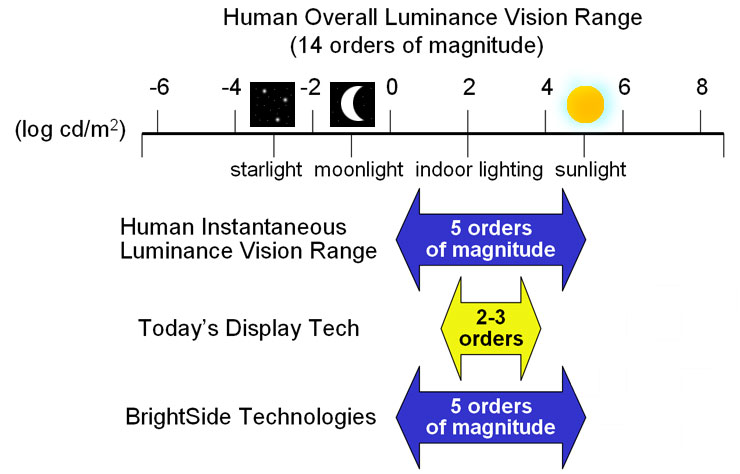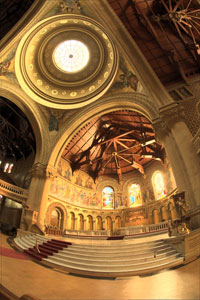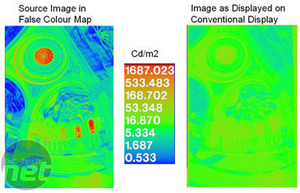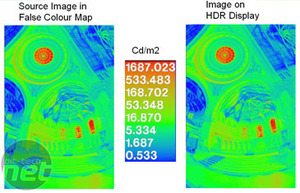
Luminance
Luminosity - what most people call 'brightness' - is measured in candelas per square metre, or cd/m² (also sometimes referred to as 'nits'). A candela is the unit of measurement to describe the luminous intensity (amount of light) emitted by a light source. For example, a common household candle emits about 1 candela; a 100W light bulb generates approximately 120 cd.Most desktop LCD monitors produce around 250-300cd/m2. An LCD TV is often in the range of 300-600cd/m², and Plasma screens can reach up to 1000cd/m². The higher the luminance, the brighter the whites obviously, but also the more vivid the colours become.

The human eye is a truly amazing optical sensor. At the threshold of vision the dark adapted observer can see a flash if it contains, on average, 90 photons at the cornea or 9 at the retina. This is equivalent to a candle at 30 miles on a clear night.
Scotopic Luminance, such as starlight, is as low as 0.001 cd/m², yet under bright daytime conditions (Photopic Luminance) we see a luminance of some 10,000 cd/m². Under normal conditions, we can simultaneously see about five orders of magnitude of luminance, yet existing display technology is limited to just two or three orders of magnitude.
This is an HDR photograph taken of Stanford Memorial Church, at Stanford University, as taken by graphics researcher and HDR guru, Paul Debevec. It has become the stock image when explaining High Dynamic Range theory, so we will use it here to explain the LDR luminance vs HDR luminance.
On the left is what a true HDR image looks like on a conventional display. The colours represent the luminance in cd/m² across the entire image, according to the scale in the middle. As you can see, the very bright area of the skylight registers a muted orange value around 300 cd/m² and the dark areas a very light blue of around 1 cd/m².
In the image on the right (click for a larger version) you can see that the HDR display replicates the original image exactly; it has the dynamic range to simultaneously display that dark areas of 0 cd/m², as well as the bright highlights of nearly 4000 cd/m².

MSI MPG Velox 100R Chassis Review
October 14 2021 | 15:04











Want to comment? Please log in.